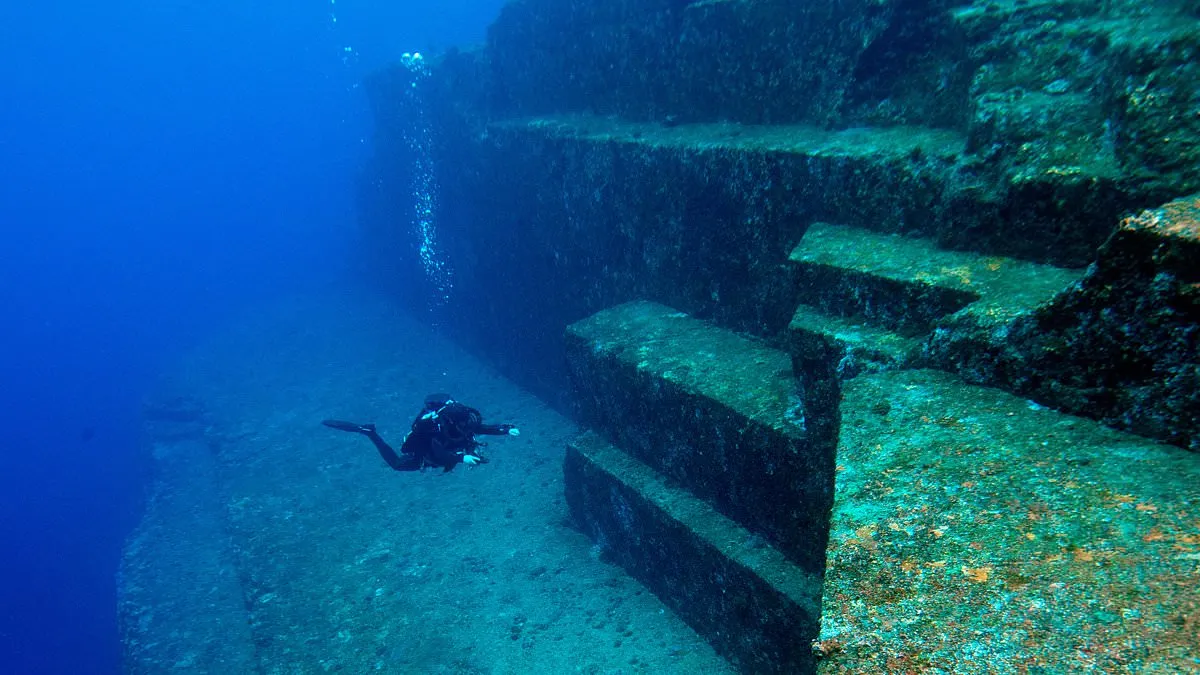
A sunken pyramid near Taiwan, known as the Yonaguni Monument, could potentially reshape our understanding of ancient civilizations. Discovered in 1986, this intriguing structure lies just 82 feet below sea level near the Ryukyu Islands of Japan. The Yonaguni Monument features sharp-angled steps and stands approximately 90 feet tall, leading many researchers to speculate that it may have been constructed by human hands.
What makes the Yonaguni Monument particularly fascinating is the age of the stone it is composed of, which has been dated to over 10,000 years old. If a civilization actually constructed this pyramid, it would have occurred before the region submerged underwater—over 12,000 years ago. This timeline places the Yonaguni Monument well before many other ancient structures, such as the Egyptian pyramids and Stonehenge, by thousands of years.
Current scientific understanding suggests that the ability of ancient humans to create large structures like temples and pyramids emerged around 12,000 years ago, coinciding with the advent of agriculture. However, if an advanced society was indeed building giant step pyramids long before this era, the implications for human history could be monumental, potentially revealing another lost civilization akin to the legendary Atlantis.
The Yonaguni Monument is often referred to as "Japan's Atlantis," but the theory that it was created by ancient humans is met with skepticism. Recently, the site gained significant attention after a heated debate on the Joe Rogan Experience podcast, where author Graham Hancock and archaeologist Flint Dibble discussed the monument's origins. Dibble firmly rejected the idea that any of the structures found by divers could have been man-made, stating, "I've seen a lot of crazy natural stuff and I see nothing here that to me reminds me of human architecture."
Hancock countered, arguing that photographs taken during dives at the site display clear signs of human-made features, including arches, megaliths, steps, terraces, and what appears to be a carved rock 'face.' If the Yonaguni Monument indeed originated from a civilization over 10,000 years ago, it would add to the growing list of perplexing structures that challenge our understanding of ancient engineering capabilities.
In its time period, the Yonaguni Monument could align with other significant archaeological sites, such as Göbekli Tepe in Turkey, known for its remarkable construction dating back to around 9500 BC. This site, part of the Pre-Pottery Neolithic Era, predates the Egyptian pyramids by over 5,000 years and Stonehenge by about 6,000 years. Moreover, another ancient site in Indonesia, Gunung Padang, may even predate both the Yonaguni and Göbekli Tepe by an astonishing 16,000 years, suggesting that these ancient civilizations were far more advanced than previously thought.
Dr. Masaaki Kimura, the scientist who tested the sandstone and confirmed its age of over 10,000 years, suggests that at that time, the structure would have been above water, prior to the significant rise in global sea levels caused by the melting of ice sheets at the end of the last Ice Age. During the peak of the Ice Age, approximately 20,000 years ago, sea levels were about 400 feet lower than they are today.
In contrast, Dr. Robert Schoch of Boston University has expressed skepticism about the monument's origins, arguing that geological processes could explain its features. He noted that the Yonaguni Monument shares similarities with other local geological formations and emphasized its location in an earthquake-prone area, suggesting that the fractures and flat surfaces of the rocks may simply be natural occurrences. Schoch pointed out that while many observers perceive the structure as artificial due to its regularity, further evidence is necessary to confirm its origins.
As the debate surrounding the Yonaguni Monument continues, the scientific community remains divided. While some view it as a potential remnant of a lost civilization, others maintain that it is primarily a natural formation. The ongoing research and discussions surrounding this enigmatic pyramid will undoubtedly continue to captivate historians and archaeologists alike, keeping the mystery of Japan's Atlantis alive for future generations.